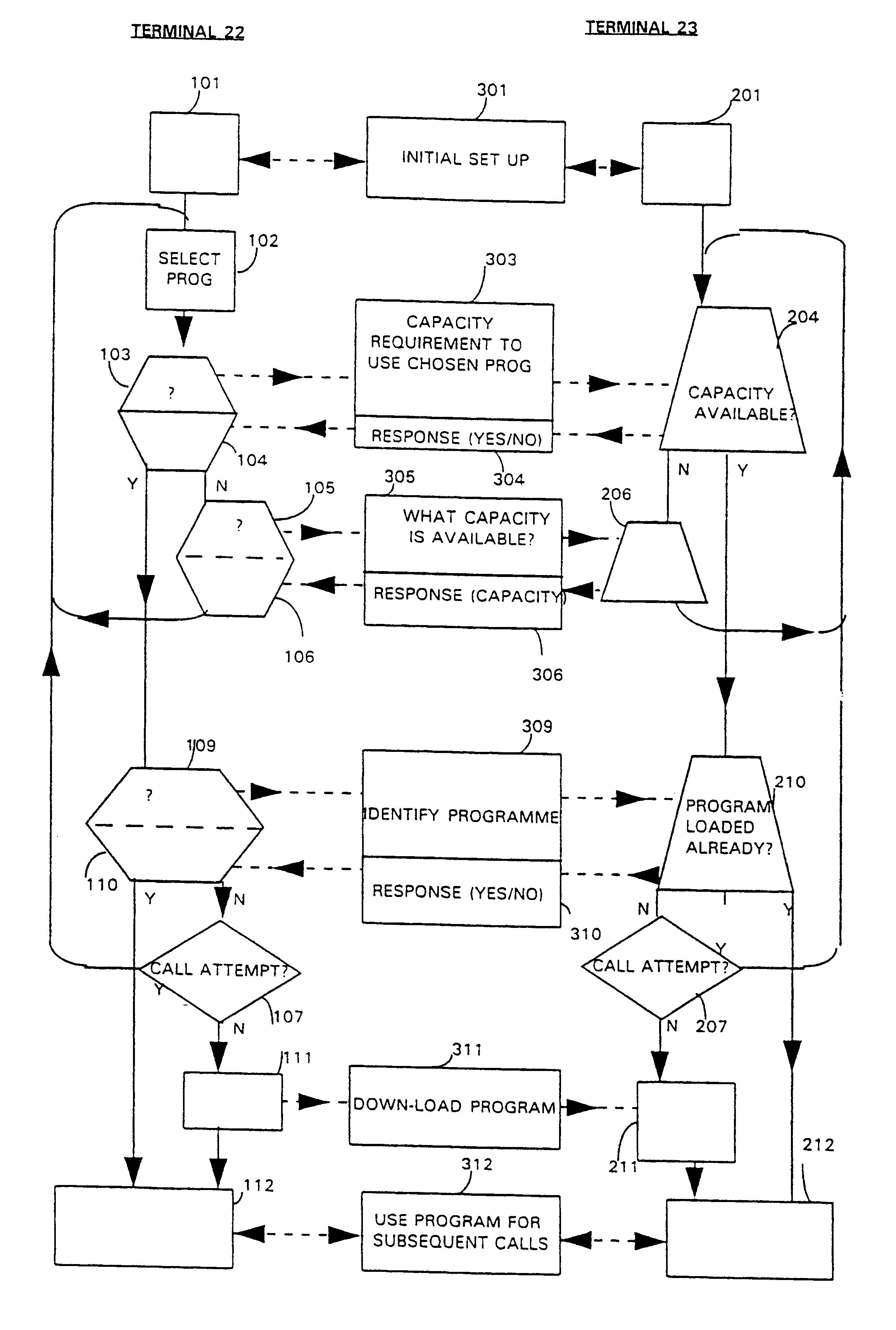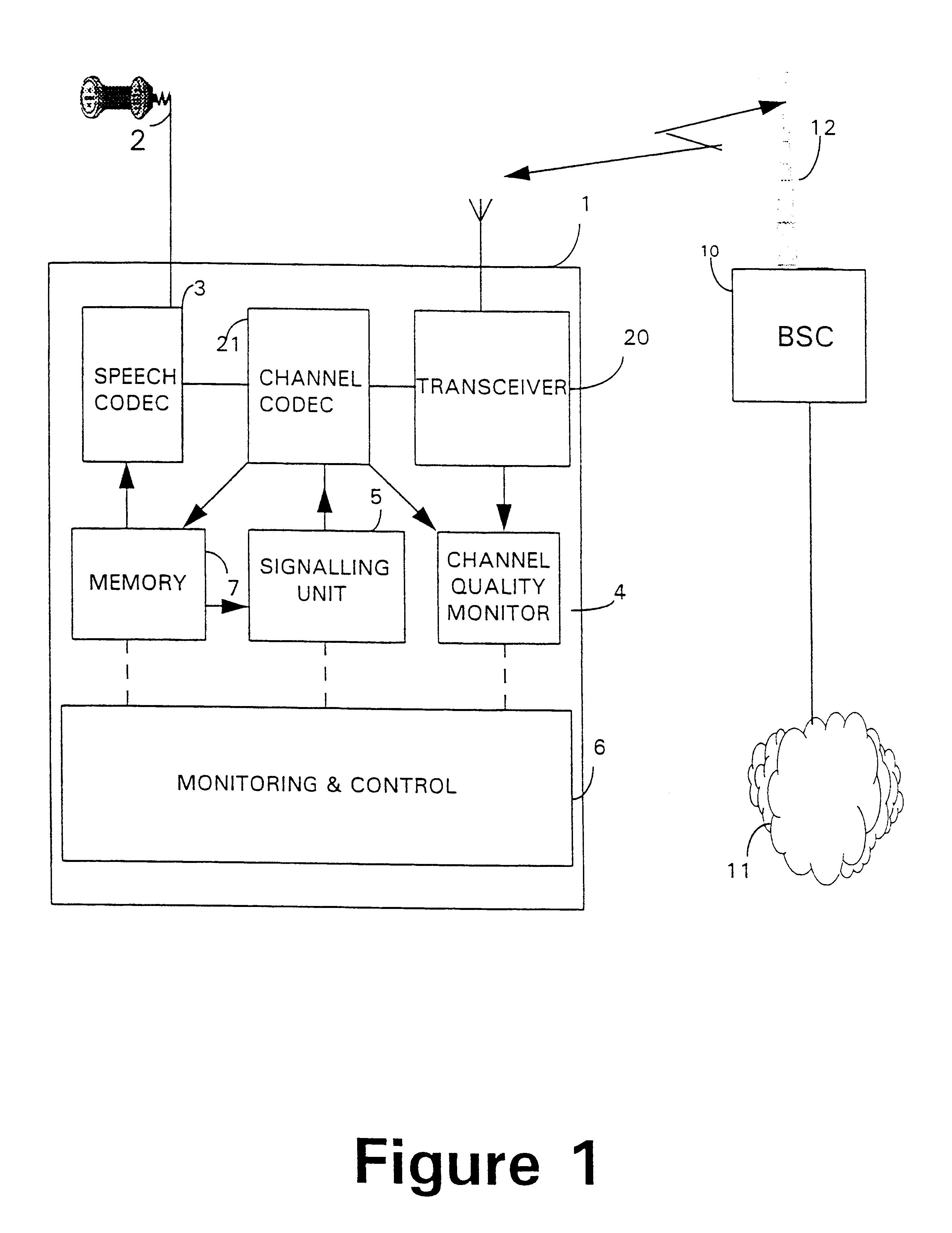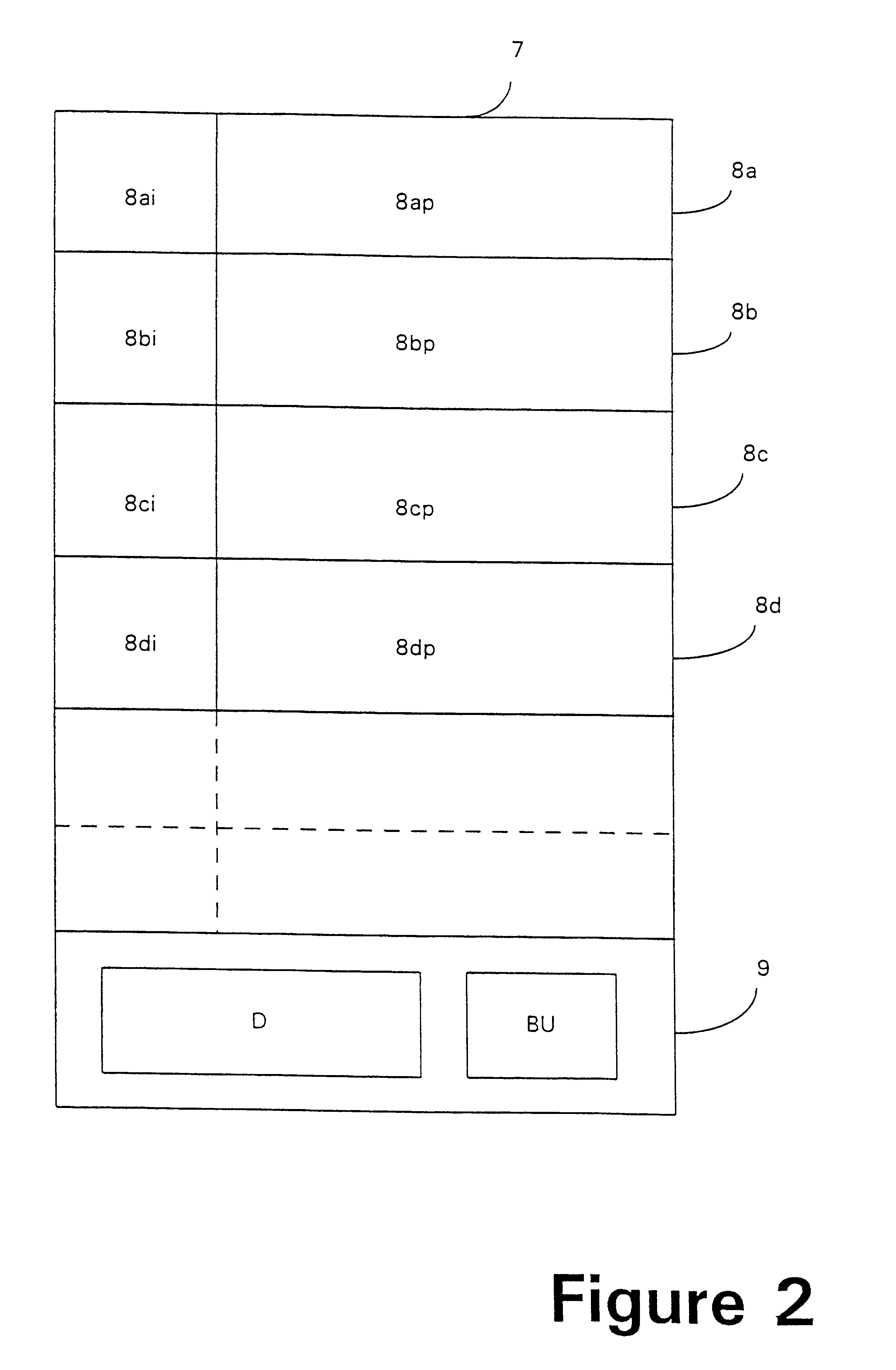Provision of telecommunications control program data pursuant to preliminary data exchange between system elements
a technology of control program and data exchange, applied in the field of telephone systems, can solve the problems of inability to provide preliminary data exchange between system elements,
- Summary
- Abstract
- Description
- Claims
- Application Information
AI Technical Summary
Benefits of technology
Problems solved by technology
Method used
Image
Examples
Embodiment Construction
In the embodiment illustrated in FIGS. 1 to 4 the base station control system 10 has a store of suitable codec programs available to it, which can be downloaded to the mobile telephone 1 as required for individual telecommunications transactions. The mobile telephone 1 has a memory in which a default program is stored in read-only memory, and one or more suitable alternative programs can be stored in electronically erasable programmable read-only memory (EEPROM) such that further programs can be stored if required to carry out a different transaction. These will typically be codec programs requiring a lower bit-rate or providing improved error correction capabilities, which may require more individual data memory within the mobile telephone than the default program, or may simply be faster or more efficient, but require the same amount of memory.
Referring firstly to FIG. 1, a mobile telephone 1 comprises a user interface (mouthpiece and earpiece) 2. It also comprises transceiver cir...
PUM
 Login to View More
Login to View More Abstract
Description
Claims
Application Information
 Login to View More
Login to View More - R&D
- Intellectual Property
- Life Sciences
- Materials
- Tech Scout
- Unparalleled Data Quality
- Higher Quality Content
- 60% Fewer Hallucinations
Browse by: Latest US Patents, China's latest patents, Technical Efficacy Thesaurus, Application Domain, Technology Topic, Popular Technical Reports.
© 2025 PatSnap. All rights reserved.Legal|Privacy policy|Modern Slavery Act Transparency Statement|Sitemap|About US| Contact US: help@patsnap.com



